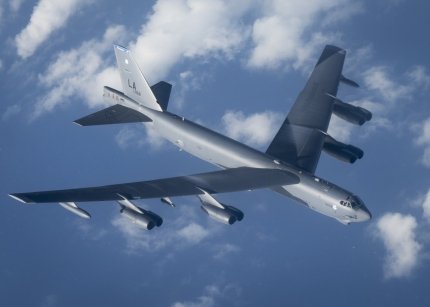Steadfast Noon ("Steadfast Noon") is a special exercise of the Alliance with a rehearsal of nuclear strikes, which will begin on October 14.
Points of attention
- Steadfast Noon is a special NATO exercise involving nuclear strikes rehearsal, with aviation units from 13 countries participating in the use of American nuclear munitions.
- The maneuvers serve as a signal to adversaries that NATO will protect and defend all allies, especially those without nuclear weapons who may need to rely on American nuclear weapons.
- The exercises focus on the aviation aspect of the nuclear triad, with fighters carrying B61 type nuclear bombs for simulated nuclear strikes over several NATO countries.
- NATO's upcoming meeting with Russia's defense ministers will address the future of the NATO-Russia Founding Act and determine the Alliance's stance towards Moscow post-2022 invasion.
- France stands out as the only Western country with tactical nuclear ammunition for aviation, emphasizing the evolving nature of nuclear capabilities in the region.
NATO will hold Steadfast Noon nuclear exercises
The new NATO Secretary General Mark Rutte emphasized that these maneuvers are "a signal to any adversary that NATO will protect and defend all allies." Especially in light of the fact that many members of the Alliance, which do not have nuclear weapons themselves, must use American nuclear weapons if necessary.
Steadfast Noon is dedicated to only one part of the nuclear triad — aviation. Fighters should carry nuclear weapons, and free-falling bombs of the B61 type should be used for nuclear strikes.
2,000 people from 13 Alliance countries, 8 air bases and more than 60 aircraft are taking part in this year's exercises, as reported by NATO. At the same time, not only fighters that will simulate the tasks of nuclear strikes, but also escort fighters, air tankers, reconnaissance aircraft and electronic warfare.
It is noted that the flights themselves will take place over Belgium, the Netherlands, Denmark, Great Britain and the North Sea.

In 2024, from June 1, the carriers of nuclear weapons in the Netherlands Air Force will be exclusively F-35s. These fifth-generation fighters have taken over this task from the F-16s, which are being phased out. In addition, strategic bombers B-52, B-1 and B-2 traditionally participate in such exercises from the US side, but nothing is said about their participation in the message.
The US stores (or can store) its nuclear weapons in Belgium at Kleine Brogel air base, in the Netherlands at Volkel, in Britain at Lakenheath. In addition, the list of "nuclear" air bases includes Büchel and Ramstein in Germany, Aviano and Ghedi in Italy, as well as Incirlik in Turkey.
Currently, it would be quite logical to create missiles with nuclear ammunition for tactical aviation, which can be launched from a safe distance, only one country in the West has taken this path — France. Back in the 80s, a nuclear ASMP with a range of 300 and then 600 km and a speed of up to Mach 3 was created, and now a hypersonic ASN4G with a range of 1000 km is being created to replace it.
What is known about NATO's position on relations with Russia
On October 17-18, the defense ministers of NATO member countries will hold a meeting in Brussels, during which a review of the Alliance's relations with the aggressor country Russia will begin.
As one of the journalists' insiders reported, secret discussions regarding the official definition of relations with Moscow have been going on in the Alliance for several months.
What is important to understand is that the meeting of the heads of the Ministry of Defense in Brussels next week will be the first official opportunity to choose a specific path for the bloc.
The focus this time will be on the future of the NATO-Russia Founding Act signed in 1997. This document is effectively still in effect, although some countries have claimed that the full-scale invasion of 2022 has rendered it invalid.




